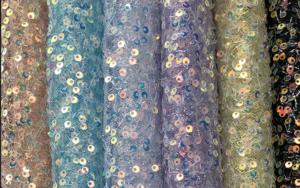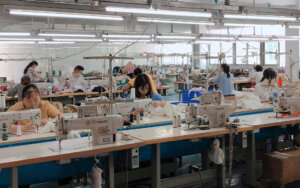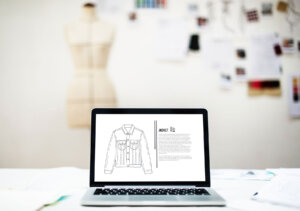Seams are the backbone of any garment, playing a crucial role in binding fabric pieces together to form the shape and structure of clothing. The right type of seam ensures durability, comfort, and aesthetics, depending on the fabric and design.
Whether you’re launching a sewing service or building your clothing brand, understanding different seam types is essential. The appropriate seam can enhance the garment’s longevity, bring your creative designs to life, and ultimately help your products stand out in a competitive market.
What is Seam?
Seams are the joints where two or more layers of fabric are stitched together in garment construction. They are essential for holding the fabric in place and giving the garment its shape, durability, and structure.
Seams can vary in appearance, strength, flexibility, and purpose depending on the fabric, garment design, and intended use.
Understanding Seam Structure
A seam consists of several components that work together to ensure a durable and visually appealing finish:
Stitching Line: This is where the stitches are placed to join two pieces of fabric. It forms the foundation of the seam.
Seam Allowance: The extra fabric between the stitching line and the raw edge of the fabric. It’s crucial to ensure that the seam is strong and won’t fray. The width of the seam allowance can vary based on the garment’s design and fabric type.
Stitches: The type of stitch used (e.g., straight, zigzag, or overlock) influences the strength, stretch, and appearance of the seam. The stitch type chosen depends on the fabric and the garment’s purpose.
Edge Finish: The way the raw edges of the seam allowance are treated to prevent fraying. This can be done using techniques such as overlocking, pinking, or bias binding.
Fabric Layers: Seams typically involve two or more layers of fabric. The number and arrangement of these layers can affect the seam’s functionality and aesthetics.
Understanding the structure of seams helps in choosing the right method for different fabrics and designs, ensuring the garment is not only well-constructed but also comfortable and long-lasting.
Why Seam Selection Matters in Garment Design?
Seams as Design Elements
Seams do more than just hold fabric pieces together—they are an integral part of garment design. Different types of seams can be used to create unique design details, textures, and visual interests.
For example, topstitching seams can add decorative lines that enhance the garment’s appearance, providing a tailored or athletic look.
Exposed seams can give a garment a modern, raw edge, while princess seams help shape and contour the garment, offering a flattering fit and elegant style.
By creatively using seams, designers can express their artistic vision while maintaining structural integrity.
Balancing Aesthetics and Durability
Aesthetics: A suitable seam complements the fabric and design. For instance, delicate fabrics like chiffon benefit from French seams, which hide raw edges and create a clean, elegant finish.
Durability: Seams must endure the wear and tear of daily use, especially in high-stress areas like shoulders or side seams. Seams like flat-felled or double-stitched seams provide added strength without compromising the garment’s look.
Common Types of Seams
Plain seam: This is the most basic seam, used to join two pieces of fabric with the right sides facing each other. It is commonly found in most types of clothing.

French Seam: A seam that encloses raw edges within itself, creating a clean and neat finish. It is typically used for lightweight or delicate fabrics like chiffon and silk.

Flat-Felled Seam: It encloses raw edges for extra strength and durability and is commonly found in jeans, shirts, and sportswear.

Overlocked (Serged) Seam: Created with an overlock machine, this seam trims the fabric while stitching and finishing the edges. It is commonly used in knits and casual wear for stretch and a tidy finish.

Bound Seam: Raw edges are enclosed with a strip of fabric or bias binding in this seam. It’s often used in visible areas for decorative or structural purposes, such as inside unlined jackets or bags.

Double-Stitched Seam: A reinforced plain seam with an extra row of stitching to add durability and strength, particularly in high-stress areas like the crotch of pants.

Welt Seam: Similar to a flat-felled seam, but less bulky. The raw edge is turned under and stitched for tailored garments to provide a clean, flat finish.

Lapped Seam: This seam overlaps two layers of fabric and stitches them in place. It’s frequently used in sportswear and denim for strength and flexibility.

Zigzag Seam: This seam uses a zigzag stitch, which is flexible and prevents fraying, often used on stretchy fabrics or for finishing raw edges.

What are the other types of seams?
- Edge-Stitched Seam
- Topstitched Seam
- Slot Seam
- Hairline Seam
- Taped Seam
- Self-Finished Seam
- Glued Seam
- Fused Seam
- Piped Seam
- Reinforced Seam
- Bias Bound Seam
- Rolled Hem Seam
- Seamless Bonding (using heat or adhesive for a smooth finish, common in performance and activewear)
- Decorative Seam (used for aesthetic purposes, such as contrast stitching or embellishment)
- Corded Seam (inserting a cord into the seam for decorative or structural effects)
- Princess Seam (shaped seams commonly used in women’s clothing for contouring the body)
- Invisible Seam (used in knitwear to make seams less visible)
- Open Seam (seam allowances are pressed open and can be topstitched or left as is)
- Closed Seam (seam allowances are pressed to one side and stitched down)
- Stretch Seam (using elastic thread or zigzag stitch for flexibility in garments like leggings)
Special seams for different fabric types
Different fabrics have different properties, such as elasticity, thickness, and tendency to wear, so choosing the right seams can help improve the performance and longevity of your garment.
| Fabric Type | Recommended Seam Types | Key Characteristics |
| Lightweight/Delicate | French, Rolled Hem, Bound Seam | Clean, minimal, prevents fraying |
| Medium-Weight | Plain, Flat-Felled, French Seam | Balanced strength and aesthetic |
| Heavyweight | Flat-Felled, Welt, Lapped Seam | Sturdy, reinforced, handle weight |
| Stretch | Overlock, Zigzag, Flatlock Seam | Flexible, stretch with the fabric |
| Sheer | French, Rolled Hem, Bound Seam | Lightweight, prevents fraying, nearly invisible |
| Knitted | Overlock, Flatlock, Zigzag Seam | Flexible, stretch-friendly, prevents distortion |
The Importance of Seam Allowances
What is Seam Allowance?
Seam allowance refers to the extra fabric left between the raw edge and the stitching line in garment construction. This allowance is crucial for ensuring the seam’s durability and flexibility.
Why is Seam Allowance Important?
Inadequate seam allowances can cause seams to break or fray, impairing the garment’s durability and strength.
Seam allowances allow for adjustments and alterations. This provides flexibility to adapt to specific fit requirements or trends.
Choosing the right seam allowance ensures the fabric performs as expected and avoids puckering or excessive bulk.
The right seam allowance ensures that the fabric is flat and smooth, thus enhancing the appearance and quality of the finished garment.
During the manufacturing process, standard seam allowances maintain consistency and minimize errors, thus ensuring high-quality production.
Common seam allowances in garment construction
- 1/4 inch (6 mm): Used for lightweight fabrics or delicate seams where bulk needs to be minimized, such as lingerie or sheer fabrics.
- 3/8 inch (1 cm): Common in ready-to-wear clothing for more streamlined seams.
- 1/2 inch (1.27 cm): Often used for garments that require some flexibility in fitting, like blouses and dresses.
- 5/8 inch (1.5 cm): The industry standard for most garments, providing enough room for durability and alterations.
- 1 inch (2.5 cm) or more: Typically used in tailored garments or heavy fabrics like denim or wool, allowing for adjustments and more reinforcement in stress areas.
Seam allowances are a fundamental aspect of garment construction, and for experienced garment manufacturers, it is possible to choose the right seam allowances for different garments to ensure a good fit and durability.
If you are working with a professional garment manufacturer, they can choose the right seam allowances for different garments to ensure a good fit and durability.
What is the strongest upholstery seam?
The flat-felled seam is one of the strongest seams, often used in workwear and denim jeans. It encloses raw edges and adds strength to high-stress areas, making it ideal for garments that need durability.
What is the difference between a seam and a stitch?
A seam is a line where two pieces of fabric are joined, while a stitch refers to the individual loops of thread that make up the seam.
The seam is the final result of stitching fabric together, and different stitch types (e.g., straight, zigzag) can be used to create various seam finishes.
Conclusion
Seams are the backbone of garment construction, and whether you’re designing high-end fashion, sportswear, or casual apparel, understanding how to use the different types of seams is crucial to ensuring the quality and longevity of your garments.
As an experienced OEM apparel manufacturer, we’re ready to help you navigate the world of seams and garment construction to ensure that your designs are perfectly realized.
Ready to get started? Let’s discuss how you can bring your next collection to life with the perfect seam selection.





